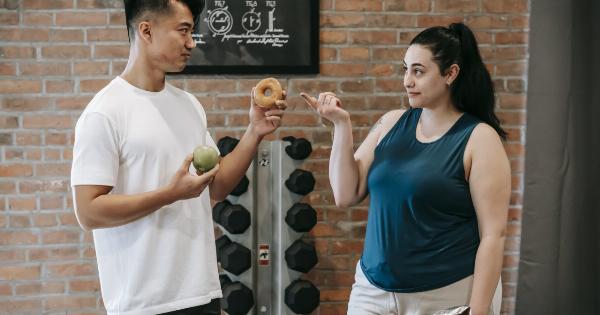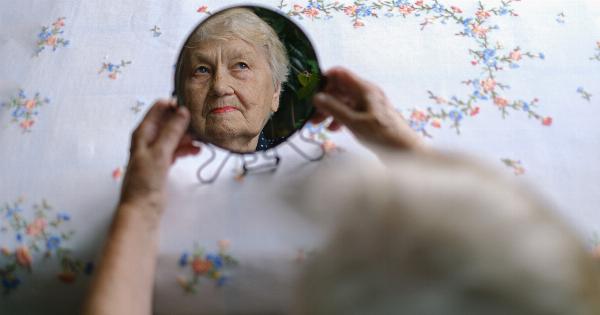Have you ever wondered how your facial features compare to others in your age group? It’s natural to be curious about how we look compared to our peers.
In this article, we will explore the concept of facial features and how they vary across different age groups. We will also discuss the significance of comparing facial features and how it can provide valuable insights into our own appearance.
The Science of Facial Features
Our facial features are a result of a complex interplay between genetics, environmental factors, and aging. These features include the shape of our eyes, nose, jawline, lips, and other distinct characteristics that define our appearance.
As we age, these features change due to a variety of reasons, including hormonal changes, collagen depletion, and environmental factors such as sun exposure.
Scientists have long studied facial features and their variations across populations and age groups. Understanding these variations provides insights into developmental biology, evolution, and even health indicators.
For example, certain facial features may be more prominent in individuals with certain genetic conditions or indicate underlying medical conditions.
Aging and Facial Features
One of the most significant factors influencing facial features is aging. As we age, our skin loses elasticity, leading to sagging and the development of wrinkles.
The shape of our face may change due to a decrease in collagen production and the redistribution of fat. These changes can result in a loss of facial volume, hollowing of the cheeks, and a more pronounced jawline.
Furthermore, age-related changes such as thinning eyebrows, drooping eyelids, and the appearance of age spots can also impact our overall facial appearance.
It is essential to note that these changes are highly individual, and not everyone experiences them in the same way or at the same rate.
Comparing Facial Features in Different Age Groups
Comparing facial features across different age groups can be an interesting exercise. It allows us to understand how our own features align with the average characteristics of individuals in our age range.
However, it is crucial to approach such comparisons with sensitivity and self-acceptance, as beauty and attractiveness are subjective and personal.
When comparing facial features, it is helpful to consider various factors such as bone structure, skin type, and ethnicity. These factors significantly influence the appearance of our facial features and contribute to the uniqueness of each individual.
Comparisons should be made within these contexts to avoid generalizations or misunderstandings.
How to Compare Facial Features
There are several ways to compare facial features with others in your age group. Let’s explore some of the common methods:.
1. Online Facial Comparison Tools
Various online platforms offer facial comparison tools that allow you to upload a photo and compare your features with others in your age group.
These tools utilize facial recognition technology to analyze and compare specific aspects of the face, providing insights into similarities and differences based on various metrics.
2. Observational Comparisons
You can also make observational comparisons by simply looking at individuals around you and noting the similarities and differences in their facial features.
This method is subjective and relies on your own perception, but it can still provide valuable insights. However, keep in mind that this approach only provides a limited sample size and may not be representative of the entire population.
3. Professional Assessments
If you are particularly interested in understanding your facial features and how they compare to others, you may consider consulting with a professional.
Dermatologists, plastic surgeons, and facial aesthetics specialists have expertise in analyzing and evaluating facial features. They can provide you with a comprehensive assessment and offer personalized recommendations based on their observations.
Significance of Comparing Facial Features
Comparing facial features can offer various benefits and insights:.
1. Self-Awareness
By comparing our facial features to others, we gain a better understanding of our own appearance. This self-awareness can boost self-confidence and help us embrace our unique features.
2. Aging Gracefully
Understanding how our facial features change with age allows us to prepare and adjust our skincare and beauty routines accordingly. It can help us make informed decisions about treatments or interventions that promote healthy aging.
3. Beauty Standards
Comparing facial features across age groups can challenge societal beauty standards and promote a more inclusive definition of attractiveness.
It highlights the diverse range of facial features that exist and encourages acceptance of individual uniqueness.
4. Identifying Potential Health Issues
In some cases, significant deviations in facial features may indicate underlying health issues. Comparing our features within our age group can help us recognize any potential anomalies, leading to early detection and intervention.
5. Personalized Recommendations
Professional assessments of facial features provide personalized recommendations for maintaining or enhancing our appearance.
These recommendations take into account our unique facial characteristics, helping us make well-informed decisions regarding skincare, cosmetic procedures, and lifestyle choices.
Conclusion
Comparing facial features within our age group can be an intriguing exercise that offers insights into our own appearance, self-awareness, and the diversity of human features.
Understanding the ever-changing nature of our facial features as we age allows us to age gracefully and make informed decisions about our skincare routines. It is important to approach such comparisons with sensitivity and remember that beauty is subjective and should be celebrated in all its diverse forms.































